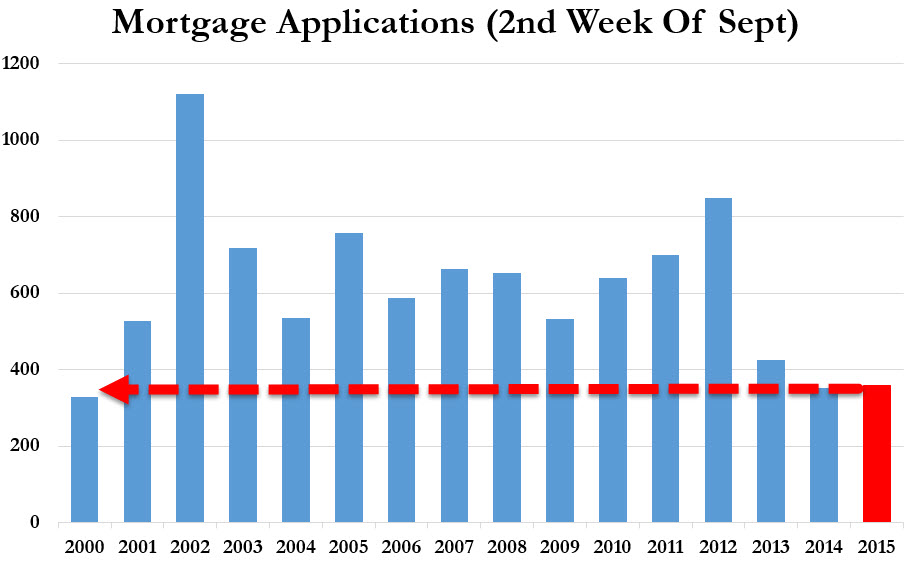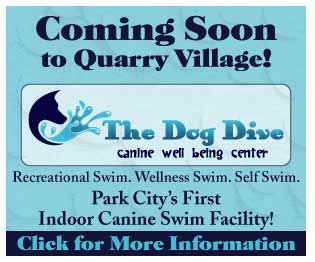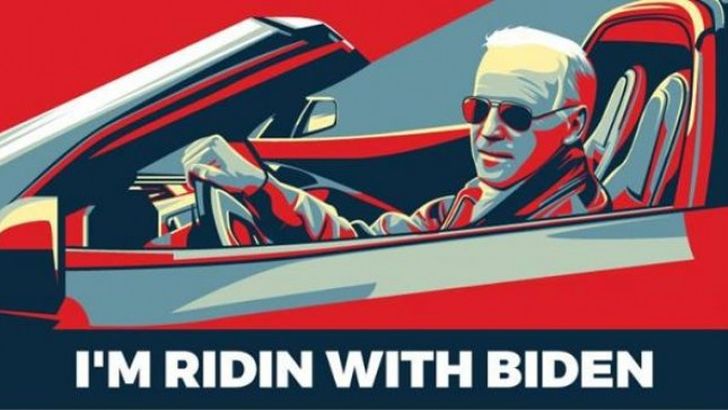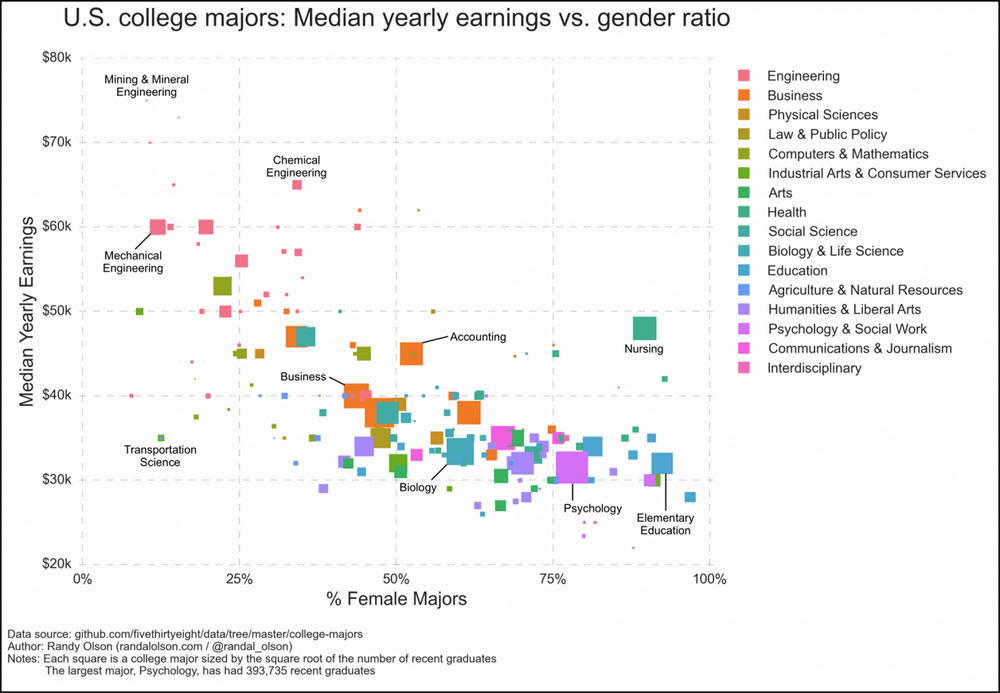How Signs Help Motorists and Cyclists Get Along
If you care about the interaction of cyclists and motorists, of which we have many of both around Park City, this New York Magazine article may be interesting to you. It seems that a study (albeit online) seems to indicate that the choice of wording on signs, greatly influences interactions between different groups on the roads. For instance, many locales will have signs saying “Share the Road” trying to indicate that bikes and cars should coexist on our roadways. They don’t seem to achieve good results. However, instead saying, “Bicycles May Use Full Lane” yields superior results.
Studies like this point to interesting ideas how to make our interactions better everywhere form ski slopes, to trails, to roads.
If you are interested, here is the article.
Homebuilder Confidence at 2005 Levels While Mortgage Applications Are Down… Be Careful Out there
Upton Sinclair famously said, “It is difficult to get a man to understand something, when his salary depends on his not understanding it.”
With that, I present three charts related to housing. The first shows that homebuilder confidence (National Association of Home Builders or NAHB) is at all time highs. What this means to people in Park City is that companies like Ivory Homes (Park City Heights) and Woodside Homes (East creek Ranch in Silver Creek) are likely full speed ahead on building homes. Yet, someone has to buy them.
If you look at mortgage applications, nationwide, they are trending down. If you look at the current week (2nd week of September) they are nearing lows seen twice in the last 15 years. So, who is going to buy those new homes?
The “danger” to Park City is that too much product will be built and force home values down. That is, of course, great for the family that wants to move in. It’s not so good for existing home owners whose home sales may be competing with a newer home that is less expensive. It’s also not so great in the long-run for local governments who depend on property tax revenue growth for funding programs and projects.
Park City’s Dog Dive is Intriguing
I was researching the impact to the Park Record of Apple’s latest iPhone update. For the first time, the iPhone will be able to block ads, which is causing many website publishers to freak out. More on that later.
However, I came across an ad for a business that will be opening near Pinebrook that caught my attention. Rarely do I click on an online ad, but this one had me intrigued.
Now, I have no idea whether the research indicates whether this is beneficial for a dog, but for the right dog I could see it as time well spent with your pup. It seems to be a really interesting idea, and one that is right up Park City’s alley. I hope it works out for the people who started it.
Something Doesn’t Add Up With the Whole Foods Traffic Study
On Wednesday, the Summit County Council is further examining whether a development that will house Whole Foods on Landmark Drive, across from Ruby Tuesday, should be allowed. If you are interested in the topic, I would encourage you to read the traffic study that was performed by Hales Engineering. Traffic appears to be the major holdup (along with affordable housing) to enabling a new Whole Foods at this location. Ultimately the study concludes that the new Whole Foods-based development is superior to what was allowed on the land previously. They conclude that it is safer, has better traffic operations, and it improves “alternative mode accessibility.” Therefore, it is better than what is currently allowed at the site.
Yet, there are a few questions with this analysis:
- There is no consideration of the joint impact of the new school at Ecker Hill that will become operational at the same time as this development. It’s true that it probably makes estimating traffic harder, but it doesn’t change the fact that traffic patterns on Landmark drive will be significantly altered once the school is in place. Since, the county does not HAVE to agree to this change, we need to make sure that all information is accounted for before we make altering decisions.
- If you read through the analysis and get to the end, you may, like me, think the traffic study will say that the new Whole Foods option is a worse option than currently exists. But it does not. The new proposal is better for traffic, according to the study. It makes me wonder who paid for the study. Perhaps, though, something has been lost in just reading the powerpoint.
- The traffic study cites that additions, as part of the new agreement, will make the road safer. Perhaps I’ve missed it, but I don’t see many accidents there now. Likewise, I’m sure that if they reverted to the original developer’s agreement, there will still be changes. These safety additions (like a
speed bumpraised cross walk) could likely be added to the existing agreement in exchange for a few concessions (if necessary). So, I don’t view this new agreement as the only way to ensure that Landmark Drive is safe. - The study cites being part of the Kimball Junction bus circulator, having van pool parking, hiking, and adding bike share as benefits. As for the bus circulator, most people don’t use a bus for grocery shopping. As for a van pool, I suppose you may have 16 people driving into and out of Kimball Junction to share a ride to Salt Lake. As for bike share, what percentage of people in Park City who want to ride a bike, don’t have one? If they don’t, are they going to “rent” a bike and ride it from Whole Foods into Park City to go to work? I just don’t get it. Do these things even register at a scale that even slightly contribute to solving transportation problems? Or do they just sound good? Does this really even relate to whether a Whole Foods should be on Landmark drive?
- County Council member Roger Armstrong said something interesting regarding the new hotel on Highway 224 (across from Soaring Wings) a few years back. While the case was made that a hotel typically has less traffic than a restaurant (which was what the land was approved for… before the hotel), Mr Armstrong questioned whether the hotel would have less traffic, in reality, than what was approved there. I took it as him comparing what was there then, an open field with the potential for a restaurant sometime, with a hotel that would be built for sure. If you look on 224, you’ll see a hotel that will likely open in the spring. There will be traffic associated with it. There is also the huge structure that makes the location look much less residential in nature. Would they have built a restaurant by now? Next year? Probably not. If not, there is no new traffic. It’s the same thing here. If the developer could have stuck to the original agreement, they likely would have. So, we should really be comparing the traffic of a Whole Foods with the traffic of an empty parking lot (at least for now) and whether the concept works.
As I’ve stated before, I’m all for a new Whole Foods. I was graciously invited to their envisioning session on the new store, even though I had criticized some parts of the idea. I found the Whole Foods people to be very thoughtful and caring about the community. I currently don’t frequent Whole Foods much as it makes me a little “aggro.” It’s too small, aisles are cramped, generally other customers look like the are about ready to run me over, and the nicest people you’ll find in the store work there. That said, I love the product and their concept.
I don’t know if this is or isn’t the right spot for a new Whole Foods, but I hope the analysis is done using information that matters and not what just sounds good.
Will Park City Vote For Bernie Sanders in the Next Presidential Election?
Some would say Park City is and oasis in the middle of a republican-rich Utah. Others would say it’s a swamp-infested place of Democrats in an otherwise wholesome Utah. What you can’t deny is that Park City usually leans left (the Democratic party) when voting.
This morning I was listening to Bernie Sanders, candidate for the Democratic nomination, who has overtaken Hillary Clinton in both Iowa and New Hampshire polls for president. He was again talking about his campaign against billionaires and millionaires. He was talking about shared sacrifice and said that “Yes, we will demand that millionaires and billionaires and the largest corporations in America contribute to deficit reduction as a matter of shared sacrifice.”
After I heard that, I began thinking about Park City. Yes, the area generally leans left but most of our mouths are fed by those with money…. the millionaire (and occasional billionaire). If you are in real-estate, who are buying the homes? If you are in vacation rentals, who are renting your homes? If you are Vail, who is paying $120 a lift ticket (or buying your property)? If you have a shop on Main Street, who is buying that fur hat? If you are a tax payer, who is subsidizing schools, roads, and government through second homes?
Yep, the millionaires and billionaires.
Should Bernie Sanders continue his rise, it should be an interesting election next year. Likewise, there are other people to support like Hillary Clinton. Yet, it should be interesting to see if there was a big push for this:
Thanks Mike
A reader, Mike, wrote in to correct me on a recent property values article. I had said that property values had decreased by $79 million in 2015. However, this just reflected decreases on certain properties per a Board of Equalization Spreadsheet. It apparently does not reflect all valuation changes.
An August article in the Park Record states that Summit County property values have increased from $13 billion to $15 billion in 2015.
Thanks Mike for keeping me honest.
Has the Fat Lady Already Sung on the Park City School District Bond?
I received an email last night criticizing me for yesterday’s article on Superintendent Ember Conley and the School board being held accountable for the educational outcome of their $66 million bond. No, it wasn’t from someone involved in the schools telling me I’m wrong about the bond (although, I’m sure I’ll get that). It was someone telling me that I was completely off base because the voters haven’t even approved the bond yet. The gist was, “How can you write such things? The people haven’t even had a chance to vote on it yet. When they vote it down, you’ll see.”
Yep. We’ll see.
Technically, the person is correct. The public hasn’t voted yet. That’ll come on November 3. There is even a group that has formed to oppose the bond. So, perhaps they’ll surprise me and create a message that resonates with the voter that causes enough people to say, “Hold on. Let’s not rush into this.” But I doubt it. Why?
It’s like Park City’s high school football team playing the University of Utah. If they played, our students would be outgunned, underfunded, and would be like children playing versus grown men. It’s the same with this fight.
The school district is meeting with the parent teacher organizations at each school to deliver their message. The school district hired a local PR firm, Panic Button Media, to publicize their point of view to date. They are likely hiring another PR firm to continue the process going forward. Moe Hickey, former school board member, is heading up the “Yes” committee and he is good at what he does. KPCW provides a platform almost each week for the school board to push their message (albeit with some tough questions from Leslie Thatcher). The Park Record, too, provides a platform for pushing the bond.
I’m not saying that what the “Yes” people are doing is wrong. In fact, they are doing what you do when you want to get something done. They are generally playing by the rules with a goal in mind. Pass a bond.
If you want to beat your competitor, you have to know who you are fighting. And in this case it’s a juggernaut.You are fighting Mike Tyson and he’ll bite off your ear if it wins him the fight. Stacked against you is the fact that this is an off year election and will be the only thing on the ballot in Summit County. If teachers and parents, persuaded by PTO meetings, show up and vote, that even lessens your odds.
At this point, in my opinion, if you don’t want this bond to pass you better hope for an Act of God, a 1000-year blizzard in early November, or for a procedural screw up on the part of the school district that invalidates the bond. The latter is fairly unlikely, due to the district’s business Administrator, Todd Hauber. If he doesn’t know ABSOLUTELY EVERYTHING related to the business side of schools, I’d be shocked. He is more than competent. He is the guy you’d want on your side… but unfortunately in this case, he’s on the other side (if you are against the bond).
So, has the fat lady sung? If not, she is finishing her warm up. Almost…a … done… deal.
Yet, I love a good fight. Debate and argument are a fundamental part of democracy. I don’t think the bond should just be passed because “schools are good” or “I read in the Park Record that we are going to have trailers at Trailside” or the “Yes” side has more connections and thus more media coverage.
If you are against this bond, here are some procedural things you may want to investigate. This is just a list of things you may want to check out and understand if everything was done in the right way:
- During the three community meetings where it was said that the community spoke and decided how to rebuild the Kearns campus(i.e. scenario 3), there might have been a quorum of school board members at some of the meetings. According to the Open Meetings Act, any time a quorum of members is present at a Meeting (defined as a convening of a public body to discuss, receive comment, or act on a matter under its jurisdictional or advisory power) the public must be provided notice. If there was a quorum present, these meetings were not noticed. I’m sure a School Board lawyer would argue that if a board member did not actively participate, it didn’t violate law. Yet, that’s not what the law says. In this case, one could argue that if a quorum of school board members was in attendance, they influenced the outcome of these meetings without noticing it to the public. So, if you care, I’m happy to provide videos that would let you determine how many school board members were at each meeting.
- You could do much the same thing with Master Planning Committee meetings. You would check to see if their was a quorum of school board members present (especially at some of the latter meetings) and if so, you could press that issue. Like above, the school board will lawyer up… so you’d need to be willing to do the same if you pursued this.
- The school board cannot spend any funds to “push the bond”. So, when Panic Button Media was hired to be part of this project this had to be only in a “present the facts” capacity. I have no idea whether there is any violation here but I suspect it would be hard, when you really do want to push the bond, to not slip up and provide direction to your PR firm that isn’t purely fact based. In this case, you would want to GRAMA request all emails between the superintendent, Todd Hauber, and Panic Button media.
- Along the same lines, you could look for statements by school board members, representing the district, that are not fact based. If a school board member is speaking for himself, however, he or she has first amendment rights. So school board member Tania Knauer could say that she fully supports the bond. However, she could not say that the school board wants you to vote for the bond.
- Just like stated above, it is a conflict of interest for someone paid out of public funds to push a bond. The timing of Moe Hickey leaving the school board on 7/31 and leading the “independent” committee for the bond in August is interesting. Mr Hickey received $23,629.06 in compensation in 2014. I’m not familiar with school district rules but if he was paid in August or was still on the district’s health care plan in August, there may be a little problem there.
- You’d want to evaluate the timing of the submitted bond language to ensure that it was submitted to the Summit County Clerk, Kent Jones, on time (75 days before the election). From my experience, his office date stamps everything. If the date stamp was before 8/18, when the school board voted on the issue or after 8/20, it doesn’t meet the 75 day requirement per Utah election law.
- You’d want to ensure other requirements are followed, like public meetings, voter pamphlets, etc. You’ll find that in the Utah Code, Title 11, Chapter 14.
I’m sure there are other procedural angles you could follow. If you are going to go this route, I’d recommend doing it before the election. It will be that much harder to say, “The school board violated these procedures and the bond should not be allowed” when it gets 70% of the popular vote. However, if you find a procedural problem and bring it out ahead of time, you may influence people’s’ opinion. That way, you aren’t crying sour grapes.
So, I’m sticking with my original argument. I believe the fat lady has sung. Defeating this ballot initiative will be difficult if not almost impossible.
Do I think it should be defeated? I see both sides. Only time will tell, though, whether this is money well spent. That said, if you are against the bond and want a chance, you better bring your “A” game because you’re in for a hell of a fight.
How to Watch NBC’s Sunday Night Football if You Are On DirecTV
If you are a fan of NFL football and happen to have DirecTV, You may have noticed that last night’s game between the Super Bowl champion New England Patriots and the Pittsburgh Steelers wasn’t available and Sunday’s game between the New York Giants and the Dallas Cowboys will not be available either. There is a contract dispute between KSL and DirecTV that made DirecTV pull the NBC affiliate from their lineup. The end result for football fans is they can’t watch some of the best games of the year. The end result for local businesses that would usually show the game and sell food and drinks is they are likely losing revenue.
There is an alternative though.
NBC Sports streams the games live on their website. Just go to www.nbcsports.com from your laptop and click on the live streaming link on the left side of the screen. They offer multiple camera angles, and my experience last night (when I hooked my laptop to a projector), was that it was actually better than watching the game on TV.
If you are on Comcast or DISH, you aren’t forced to jump through these hoops, but you may want to watch the website stream just to have more options when watching the game.
I believe that KSL is likely holding out, hoping that their audience will complain enough that they can’t watch Sunday Night Football, “The Most Watched Program on TV.” That won’t be me though. Now that I’ve found this workaround, I could care less if KSL ever comes back to DirecTV.
I believe this will be one of those lessons for those individuals in powerful places. If you push the common person too far, they just may not come back.
Park City School Superintendent Dr. Ember Conley’s Bold Initiative
School Superintendent Dr. Ember Conley took over the reigns of the Park City School District in 2013. In that time, she has worked hard to continue Park City’s tradition of being one of the best school districts in the state and is working towards Park City being recognized for the offering the best schools in the country. She appears focused on using data to guide the course of the school district. Yet, she is about to embark on what will be her most challenging endeavor yet during her Park City tenure.
Over the course of the next three years, the foundation of the educational system will change in Park City. All day Kindergarten will be offered to all families in Park City. This causes more children to be in our elementary schools, thus pushing them to their capacities. Therefore, 5th grade will be taken out of each elementary school. A new school will be built at Ecker Hill where 5th and 6th graders will be educated. 7th and 8th grade will now be at Ecker Hill, as well. Because of the All Day Kindergarten, the tag on effects include moving 9th grade into the high school. The high school isn’t big enough to accommodate these students, so it will be expanded. The expansion of the high school has to happen somewhere, which means that Dosier Field may be torn down and relocated. Since that is going to happen, the reasoning goes that they might as well look at all athletic facilities at the Kearns Campus and see what should be upgraded. This $66 million plan will change the entire face of Park City Schools.
Just what started the cascade of changes? Dr Conley’s contention that the district absolutely must have all day kindergarten to meet the needs of our Hispanic population. It seems that in 2014, SAGE standardized test results indicated that only 9% of Hispanic 11th graders were proficient in english. Dr Conley’s contention is that the extra 3-plus hours per day of Kindergarten will reduce the achievement gap and put Hispanic students on par with other students by third grade.
It is true that the School District had a Master Planning Committee that recommended changes to the school board. Yet, these changes were recommended based on academic needs, primarily the direction that we will have all day kindergarten. It is also true that the School Board was the one to ultimately approve all day kindergarten, yet they relied on the direction from Dr. Conley to make that decision.
So as Steven King wrote, Dr. Conley, “It’s your cat now.”
And frankly, it’s a grand strategy if she can pull it off. One of the greatest challenges of any sizable school district is to successfully educate the economically disadvantaged. The difficulty in judging that success is the variability in the data. For instance, in this year’s SAGE results, between 20% and 30% of Hispanic 11th graders were proficient in english. That’s at least a 100% improvement this year, before any buildings are built, or grades realigned. That is likely either due to our teachers finding a way and/or just a different group of kids. Yet, we have to have some means of judging whether this initiative was successful.
I believe one statistical way of doing so, is looking at the first third grade class of Hispanic kids that will attend all day kindergarten. So, if all day kindergarten begins next year, the 2019-2020 school year will begin to tell us (through a test like SAGE) if this plan is working. We should see that HISPANIC kids scores are on par with the rest of the school. For instance if we look at our best school (per SAGE results), Jeremy Ranch Elementary, 20-30% of Hispanic 3rd graders are proficient, while their caucasian counterparts are 67% proficient. If that 67% number stays consistent, our 2019-2020 class of Hispanic 3rd graders should be scoring in the 60% range. Let’s take our least performing elementary school (per SAGE), McPolin. 11-19% of Hispanic 3rd graders are proficient while 50-59% of caucasian kids are. Again, by 2019-2020, all kids should be in the at least the 50% range (and why not the 60% range).
We should also look for those results to stay consistent as our kids progress through school. This isn’t just about 3rd grade, it’s about a quality education for all kids through graduation.
Dr Conley has made a big leap with her plan and the school board has jumped in with her. Given that the average tenure for a school superintendent is 4 years, it is unlikely that Dr Conley will be here in 2019 to see if her plan worked or through the next decade to ensure that the success continues. If she does unfortunately follow trends, and pursues other alternatives, we’ll likely need to look to our current school board members to see this through and judge the success. Many of them will likely be in our community, and a few probably still on the school board. So at least there will be some people to heap praise on or hold accountable when we start to see the results.
As they say, “Fortune Favors the Bold.” When taken as a whole this was a very bold idea, with lots riding on it. Can our school district bring test results of Hispanic kids on par with others? If yes, that may be the biggest win in the history of Park City Schools. If not, $66 million could have been used in our community in much better ways.
Let’s hope that Dr Conley and the School Board were just the right amount of bold in pursuing this course.
More on College Majors and Money…
A few days ago, I wrote about the jobs a Park City graduate should aim for, if they want to move back to Park City ASAP. This graphic isn’t Utah specific, but it provides another glimpse at the majors making the highest salaries. It is framed around the concept that majors which males pursue typically make more than the majors females pursue. That’s a topic for some other blog, but it does scream that engineering is where it’s at (with regard to $$).
Click the image for a larger view.






